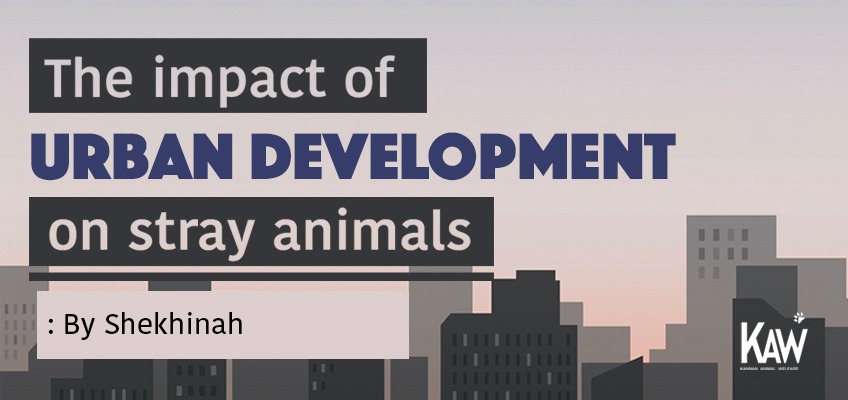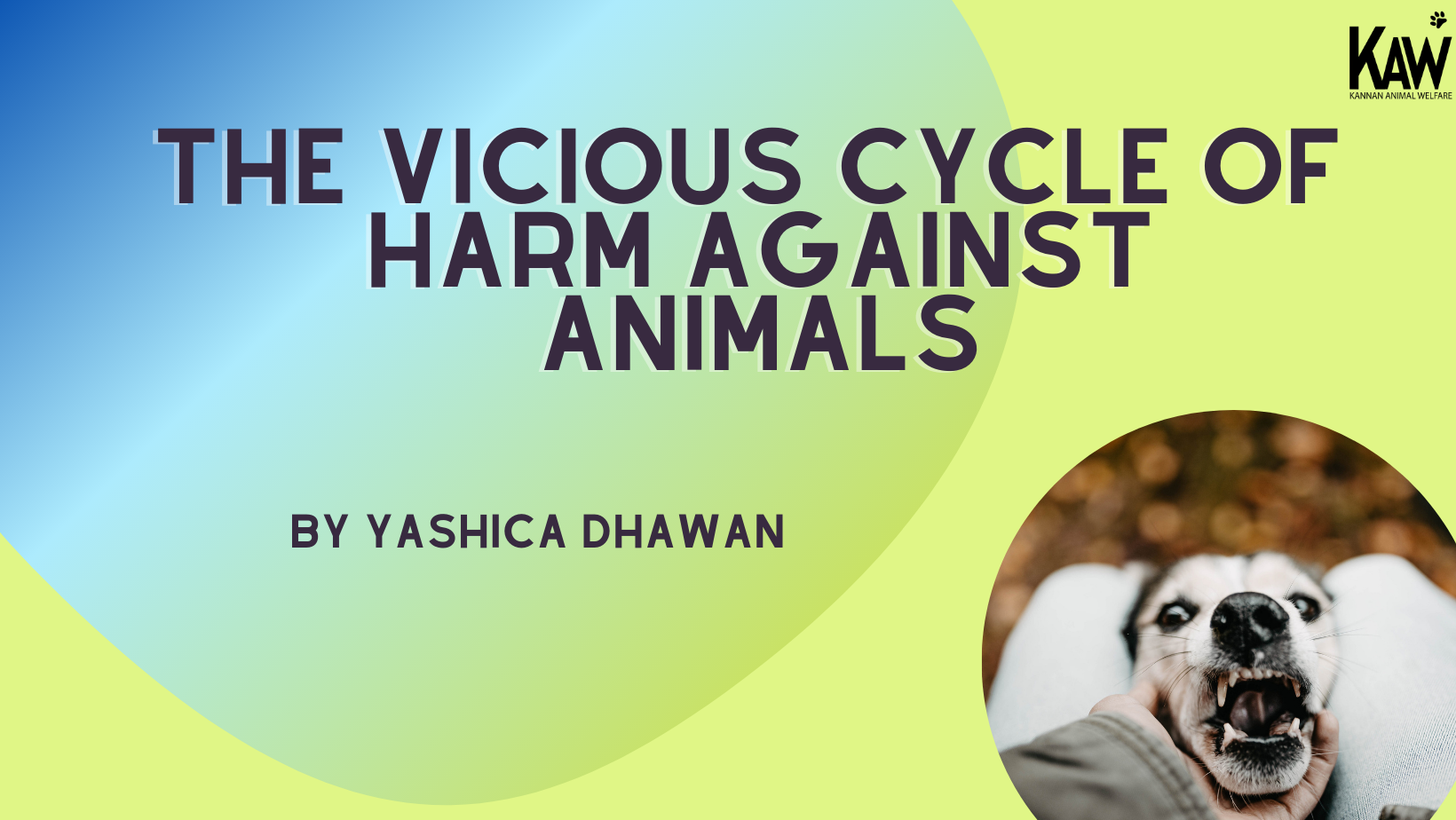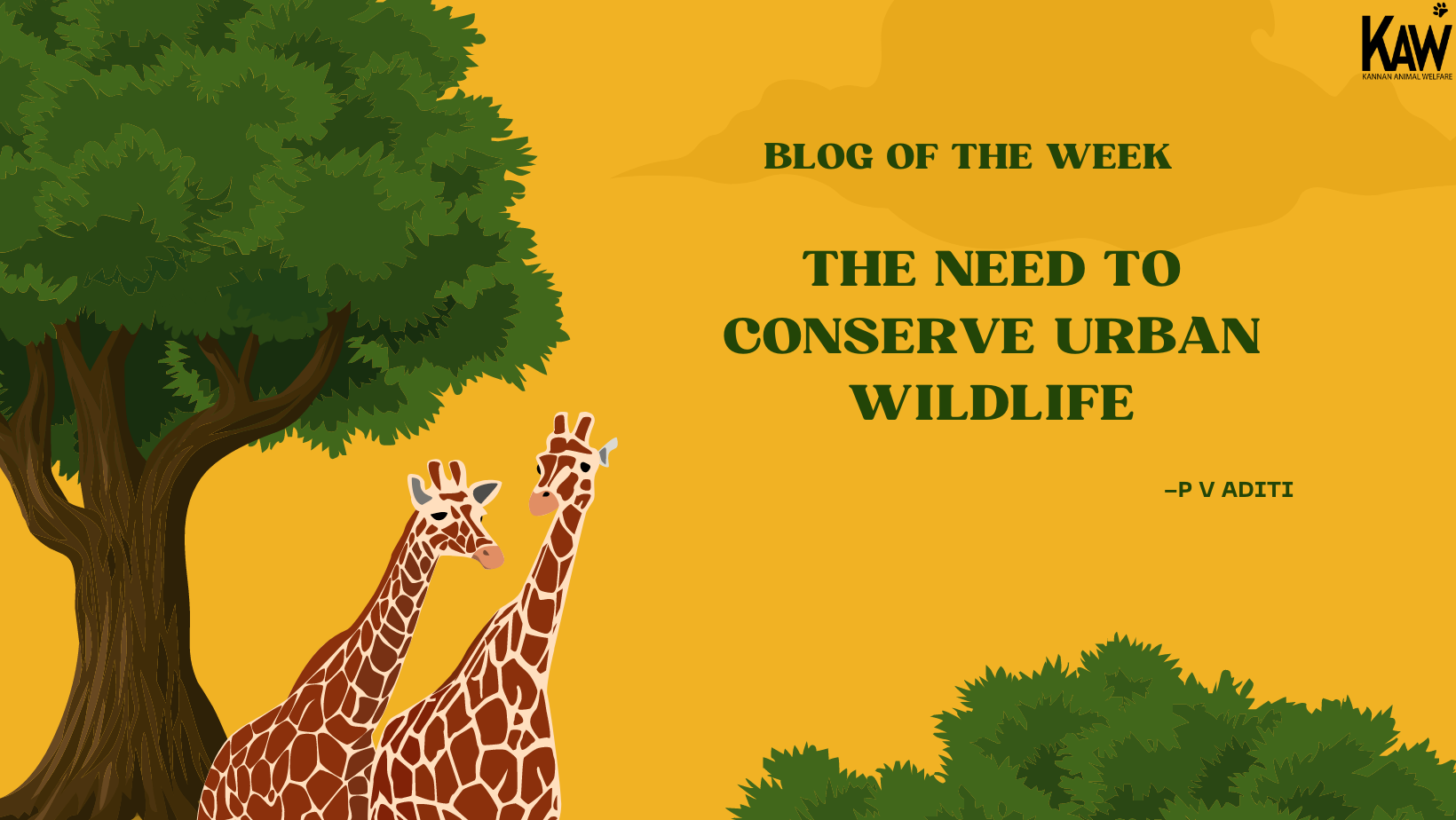In the past few decades, globalization and its emphasis on economic growth have changed the world. Our social values and lives have changed a lot over the period of a few years. Life has become fast-paced, and time has become a precious commodity. We struggle to make time for our loved ones and have increasingly forgotten those who require help - those whose voices are unheard. We have very limited time to be grateful for what Mother Earth has given us in the very first place: Life and the abundance of Nature.
Rapid urban development and the reckless growth of various cities have severely impacted stray animals, who often have nowhere to go. The expansion of luxury real estate - whether housing or offices - has become a major cause of displacement and exclusion of people and animals alike. Most high-end, posh areas have saved no place for the displaced. Air pollution and noise pollution, largely due to rampant construction activities and the consequent loss of greenery and open spaces, are also associated with major health issues for human and animal residents in cities.
Urbanization has created various issues for stray animals. The shrieking traffic noises and piercingly bright city lights can be extremely intimidating and bothersome for a dog. Such an environment makes them impatient, afraid, and restless. Urban development activities have led to distress - not just in the case of strays, but also for pets as well. Loud celebration of festivals in cramped spaces can be highly stressful and disturbing. For instance, it is very common to see community animals run to a corner with their tail between their legs during the loud celebrations in Diwali. There have also been many instances when strays have suffered accidental burn injuries because of the careless bursting of firecrackers.
These helpless strays have no voice and are often at the mercy of the artificial, urban environment. They have neither a roof over their head nor sufficient access to daily food and water. It is our responsibility to ensure that they are taken care of; even the smallest efforts will go a long way in contributing to their well-being.
The city environment is full of threats for the homeless pooches. Some of these include displacement, harmful diseases, painful infections, and gruesome deaths. The dust and pollution emitted from factories and construction sites expose adult strays to innumerable diseases and can cause serious health complications to the young ones whom they bear.
Dogs can develop diseases, such as asthma and bronchitis, when exposed to high levels of urban pollution. Some humans are privileged to have a roof over their heads, ventilation systems, and air purifiers to remove these toxins from the air we breathe. However, community animals have nowhere to escape. Moreover, due to heavy pollution exposure, strays face increased risks of brain inflammation, which is a highly fatal side effect and can be a gruesome way to die.
There are various other social and environmental risk factors for community animals in urban contexts. Being a stray in crowded cities comes with abuse and mistreatment by residents who live there. India has more than 30 million stray dogs, and out of these 30 million, at least 2 million of them are abused and ill-treated daily. Injuries and deaths caused by speeding vehicles on the highways and roads frequently occur as well; an average of 1.2 million dogs are killed annually due to vehicular accidents.
After such appalling incidents, most dogs tend to get traumatized, and tragically, some lose their will to survive. In rescue work, dealing with such cases can be highly difficult. It becomes challenging to be able to rehome dogs who have endured such trauma, as it takes them a significant amount of time to regain trust and love in humanity.
In light of this discussion, it is essential to consider the ways in which we can mitigate and prevent harmful impacts of urban development on community animals. At an individual level, we can contribute to this by ensuring timely vaccination and sterilization, taking responsibility for strays in residential buildings, and providing them with the basics like food, water, and medical care. Moreover, weekly volunteering at shelters and donating to organizations that care for community animals can support their recovery from human-caused injuries and illnesses.
We, humans, have dominated this world in almost every way possible. The least we could do is contribute a little of our effort and time to better the lives of our animal companions on this earth. Let’s raise our voices for the voiceless - for the most vulnerable among us - and build a more compassionate world!
Sources:
1-https://pubmed.ncbi.nlm.nih.gov/14692621/
2-https://www.humanesociety.org/resources/animal-cruelty-facts-and-stats
3-https://www.deccanchronicle.com/nation/in-other-news/111120/pets-can-suffer-nervous-breakdown-due-to-lound-sounds-of-firecrackers.html
4-https://mindseye.mcla.edu/2018/03/29/street-dogs-in-india-urbanization-and-biopolitics-in-the-anthropocene-by-susan-harris/






